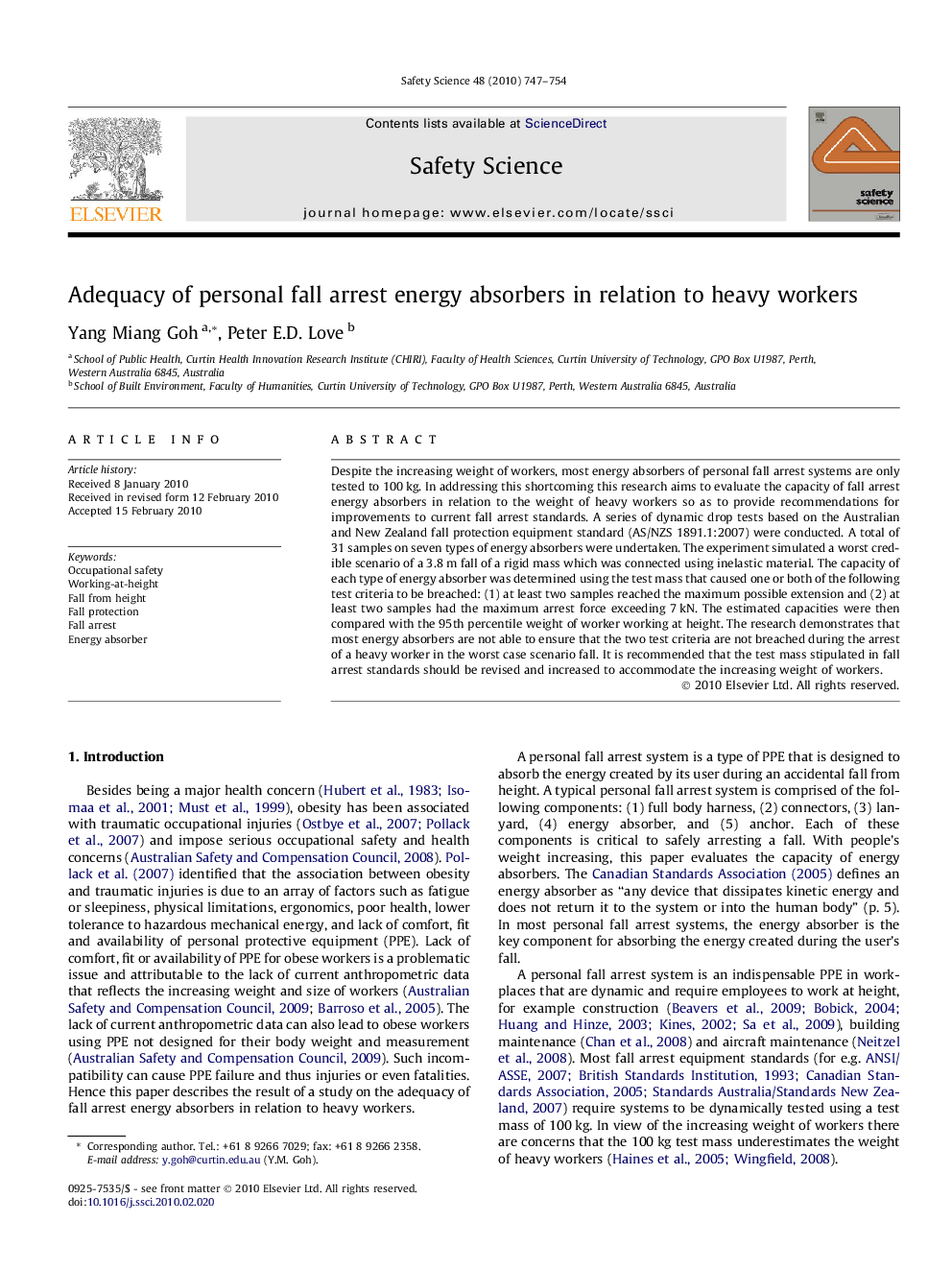| Article ID | Journal | Published Year | Pages | File Type |
|---|---|---|---|---|
| 589729 | Safety Science | 2010 | 8 Pages |
Despite the increasing weight of workers, most energy absorbers of personal fall arrest systems are only tested to 100 kg. In addressing this shortcoming this research aims to evaluate the capacity of fall arrest energy absorbers in relation to the weight of heavy workers so as to provide recommendations for improvements to current fall arrest standards. A series of dynamic drop tests based on the Australian and New Zealand fall protection equipment standard (AS/NZS 1891.1:2007) were conducted. A total of 31 samples on seven types of energy absorbers were undertaken. The experiment simulated a worst credible scenario of a 3.8 m fall of a rigid mass which was connected using inelastic material. The capacity of each type of energy absorber was determined using the test mass that caused one or both of the following test criteria to be breached: (1) at least two samples reached the maximum possible extension and (2) at least two samples had the maximum arrest force exceeding 7 kN. The estimated capacities were then compared with the 95th percentile weight of worker working at height. The research demonstrates that most energy absorbers are not able to ensure that the two test criteria are not breached during the arrest of a heavy worker in the worst case scenario fall. It is recommended that the test mass stipulated in fall arrest standards should be revised and increased to accommodate the increasing weight of workers.
